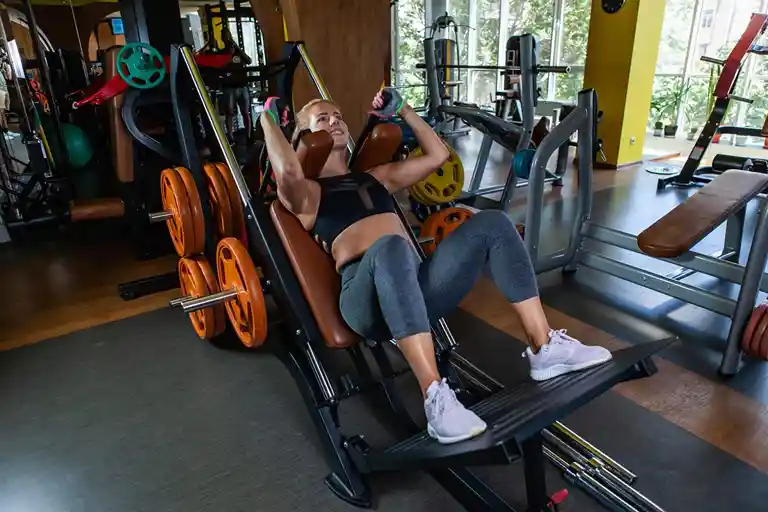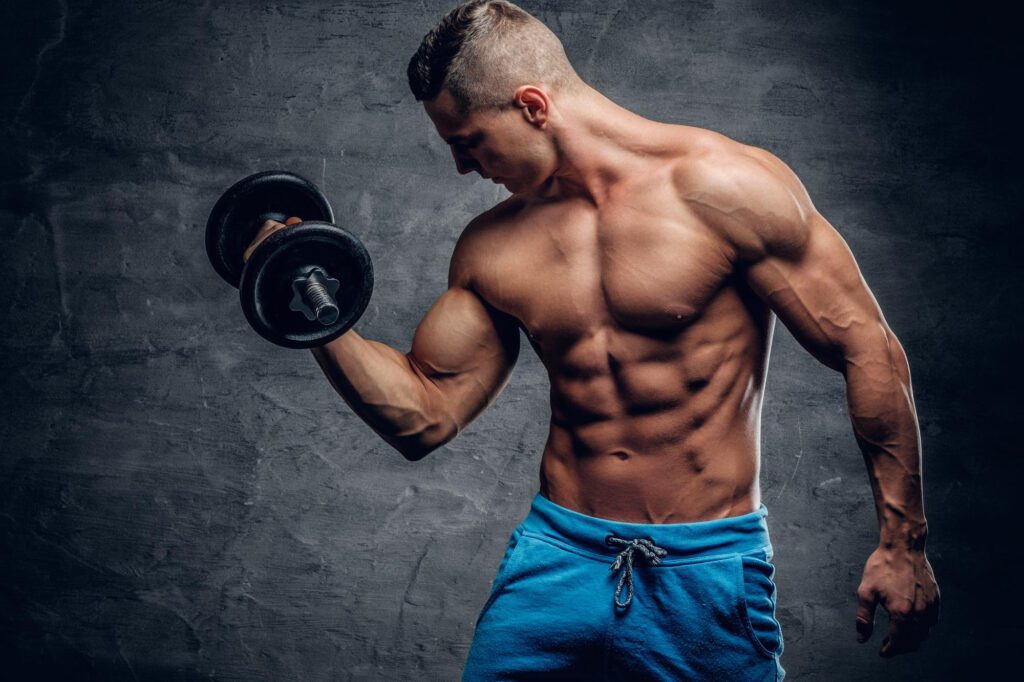V Squat: A Comprehensive Guide to Mastering the Ultimate Leg Exercise

When it comes to building strong and toned legs, the V squat is an exercise that stands out from the crowd. This powerful compound movement targets multiple muscle groups, including the quadriceps, hamstrings, glutes, and even the core. In this article, we will delve deep into the world of V squats, exploring the benefits, proper form, variations, and tips to maximize your results. Whether you’re a beginner or a seasoned gym-goer, you’ll find valuable information to elevate your leg day routine and achieve your fitness goals.
1. Understanding the V Squat
The V squat, also known as the hack squat or the sissy squat, is a variation of the traditional squat. It involves an upright positioning of the torso with the knees extending far past the toes. This unique stance puts immense focus on the quads, making it an ideal choice for individuals looking to develop strong and defined leg muscles.
When performing a V squat, your feet should be shoulder-width apart, and your toes should be pointed slightly outward. Unlike regular squats, the V squat involves maintaining an upright posture throughout the movement, allowing your knees to extend beyond your toes, forming a V shape with your legs.
2. Benefits of V Squat
V squats offer numerous benefits that make them a staple in leg workouts:
2.1 Quadriceps Development

The V squat is an excellent workout for your quadriceps, the muscles that help extend your knees. It mainly targets the vastus medialis, vastus lateralis, and vastus intermedius. By doing V squats regularly, you can strengthen and develop the muscles in the front of your thighs
2.2 Hamstring Engagement
While the primary focus of the V squat is on the quadriceps, it also engages the hamstring muscles to a certain extent. As you lower your body during the movement, the hamstrings act as stabilizers, supporting the knee joint and aiding in the upward phase of the squat.
2.3 Glute Activation: V Squat
The glute muscles, including the gluteus maximus, gluteus medius, and gluteus minimus, play a vital role during V squats. They help stabilize your body and contribute to the extension of the hips as you rise from the squat position.
2.4 Core Stability
Maintaining an upright posture throughout the V squat challenges your core muscles. Your abdominal muscles and spinal erectors work together to keep your torso stable during the exercise. This improves overall core strength and stability.
2.5 Improved Range of Motion
One of the unique aspects of the V squat is the increased range of motion compared to traditional squats. By allowing your knees to extend beyond your toes, you can achieve a deeper squat position. This greater range of motion leads to increased muscle activation and flexibility in the lower body.
3. Proper Form for V Squat
To maximize the benefits and prevent injuries, it is essential to execute V squats with proper form:
3.1 Foot Placement for V Squat
Stand with your feet shoulder-width apart and toes pointing slightly outward. The correct foot placement ensures proper alignment of your knees and hips during the movement.
3.2 Upright Posture
Throughout the entire V squat, maintain an upright posture. Keep your back straight, chest up, and shoulders back. Avoid leaning forward, as it can place unnecessary stress on your lower back.
3.3 Knee Positioning for V Squat
As you lower yourself into the squat, allow your knees to extend past your toes. This movement creates the V shape and targets the quads more effectively. However, ensure that your knees remain in line with your toes to prevent excessive stress on the knee joints.
3.4 Controlled Descent
Lower your body under control, avoiding sudden or jerky movements. Focus on a slow and controlled descent to engage your muscles throughout the entire range of motion.
3.5 Full Extension
At the bottom of the movement, fully extend your knees and hips before returning to the starting position. This complete extension ensures maximum engagement of the targeted muscles.

4. Variations of V Squats
Add variety to your leg workouts by trying these V squat variations:
4.1 Dumbbell V Squat
To increase the resistance and intensity of your V squats, you can incorporate dumbbells. Hold a dumbbell in each hand, allowing your arms to hang down by your sides. Perform the V squat while holding the dumbbells, which adds an additional challenge to your leg muscles.
4.2 Barbell V Squat
For a more advanced V squat variation, you can use a barbell. Position the barbell across your shoulders, just as you would during a traditional back squat. With the added weight on your shoulders, your quadriceps, hamstrings, and glutes must work harder to support the load.
4.3 Smith Machine V Squat
The Smith machine provides a guided motion, which can be beneficial for individuals who are still developing their V squat technique. This machine helps with stability and allows you to focus solely on the movement without worrying about balance.
5. Tips for Success

Follow these tips to make the most out of your V squats:
5.1 Warm-Up for V Squat
Always warm up before starting your leg workout. Perform dynamic stretches and movements to increase blood flow to your leg muscles and prepare them for the V squats.
5.2 Gradual Progression
If you’re new to V squats or weightlifting in general, start with a comfortable weight. As you become more familiar with the movement and your strength improves, gradually increase the weight to continue challenging your muscles.
5.3 Proper Breathing
Pay attention to your breathing during V squats. Inhale deeply as you lower your body, and exhale forcefully as you rise back to the starting position. Proper breathing helps stabilize your core and provides the necessary oxygen to your muscles.
5.4 Rest and Recovery
Allow your leg muscles ample time to recover between V squat sessions. Adequate rest promotes muscle growth and prevents overtraining, reducing the risk of injury.
6. Remember
Incorporating V squats into your leg day routine can be a game-changer for your fitness journey. This versatile exercise targets multiple muscle groups, enhances strength and improves stability. Remember to focus on proper form and gradually increase the intensity to avoid injuries and see significant results.
Frequently Asked Questions
FAQ 1: Can beginners perform V squats?
Yes, beginners can perform V squats, but it’s essential to start with lighter weights and focus on mastering the proper form before adding more resistance. If you’re unsure about your technique, consider working with a fitness professional to ensure you perform the exercise safely and effectively.
FAQ 2: Are V squats suitable for individuals with knee issues?
V squats can put additional strain on the knees, so individuals with knee issues should consult with a healthcare professional or a certified trainer before incorporating them into their workout routine. In some cases, modified versions or alternative exercises may be more appropriate.
FAQ 3: How often should I do V squats?
The frequency of V squats in your workout routine depends on your overall training plan and fitness goals. For most individuals, incorporating V squats 1-2 times per week as part of a well-rounded leg workout is sufficient. However, listen to your body and adjust the frequency as needed based on your recovery and performance.
FAQ 4: Can V squats replace traditional squats?
While V squats offer unique benefits and can be an excellent addition to your leg training, they should not replace traditional squats entirely. Traditional squats engage a broader range of muscles, including the lower back and glutes, and provide overall strength and muscle development.
FAQ 5: Are V squats suitable for advanced lifters?
Yes, V squats can be beneficial for advanced lifters as well. Advanced lifters often look for variations in their workout routine to challenge their muscles in different ways. V squats provide a new stimulus for the legs and can be used as an effective tool for building strength and size.
FAQ 6: Can V squats help with improving vertical jump performance?
Yes, V squats can contribute to improving your vertical jump performance. The exercise targets the quadriceps and glute muscles, which are essential for explosive movements like jumping. Incorporating V squats into your leg training can enhance leg strength and power, leading to potential improvements in your vertical jump.
FAQ 7: Are V squats suitable for individuals with lower back pain?
Individuals with lower back pain should approach V squats with caution. The exercise places significant stress on the lower back, especially if performed incorrectly. If you have a history of lower back issues, it is advisable to consult a healthcare professional or a qualified fitness trainer before attempting V squats. They can assess your condition and recommend suitable modifications or alternative exercises to prevent exacerbating the pain.
FAQ 8: Can V squats help in building muscular endurance?
Yes, V squats can contribute to building muscular endurance in the legs. Performing higher repetitions with moderate weights can help challenge the muscles and improve their ability to sustain effort over longer periods. Adding V squats to your training routine, along with proper rest and recovery, can promote muscular endurance.
FAQ 9: Are V squats more effective for targeting the quads than regular squats?
V squats and regular squats both target the quadriceps, but the emphasis is slightly different. V squats place a more direct and isolated focus on the quadriceps due to the positioning of the knees past the toes. Regular squats engage a broader range of muscles, including the glutes and lower back. The effectiveness of each exercise depends on your specific fitness goals and training program.
FAQ 10: Can I perform V squats without any weights or equipment?
Yes, V squats can be performed without any weights or equipment. Bodyweight V squats can still provide a challenging workout, especially for beginners or those who are just starting to build strength. As you progress, you can gradually add resistance using dumbbells or other weighted equipment to continue challenging your muscles.



